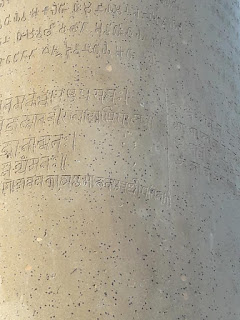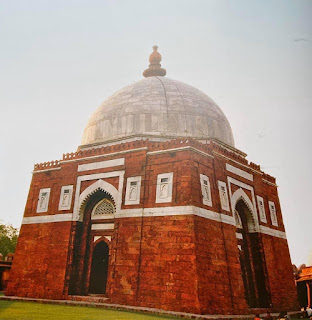Delhi Heritage Trail : 35
Ashokan Pillar at Firoz Shah Kotla
In the third century BC Ashoka the great raised seven stunningly carved and polished monolithic stone pillars to promulgate his new found Buddhist faith. This pillar in Firoz Shah Kotla was brought from Topra in Ambala district in 1356 AD. The pillars were carefully lowered into a pile of silk cotton and transported on a 42 wheel carriage because Firoz Shah did not want to damage the inscriptions in Brahmi script although he could not decipher them. Each wheel was tied with a rope and pulled over by 200 persons to transport it.
After reaching Delhi a bridge of boats was formed by the king to cross the Yamuna river and brought to Firozabad. The three storeyed building on which it stands was constructed purely to support the pillar. Each level was constructed around the pillar which was raised to the next level as each was completed. At every level the small rooms are linked and are part of Sultans route to the roof. The rooms on each floor form an arcade around a solid core and some of them are now used for Pujas.
The Ashokan Pillar is 13 metres high with over a metre sunk below the platform. Originally when it was built it should have had a Sarnath Iron Capital which was not there when Firoz Shah brought it. He is said to have decorated the top with friezes in Black and white stone surrounded by a guilded copper cupola. But now nothing is left at the top but the pillar is enormously smooth surface with the inscriptions visible as if carved yesterday.
The Brahmi inscriptions of Ashoka were deciphered by James Princep in the year 1837. Many more inscriptions were added to this pillar over a period of time. It was also believed by the local folklore in those days that it was the walking stick of Bhim one of the Pandav brothers of Mahabharata.
















